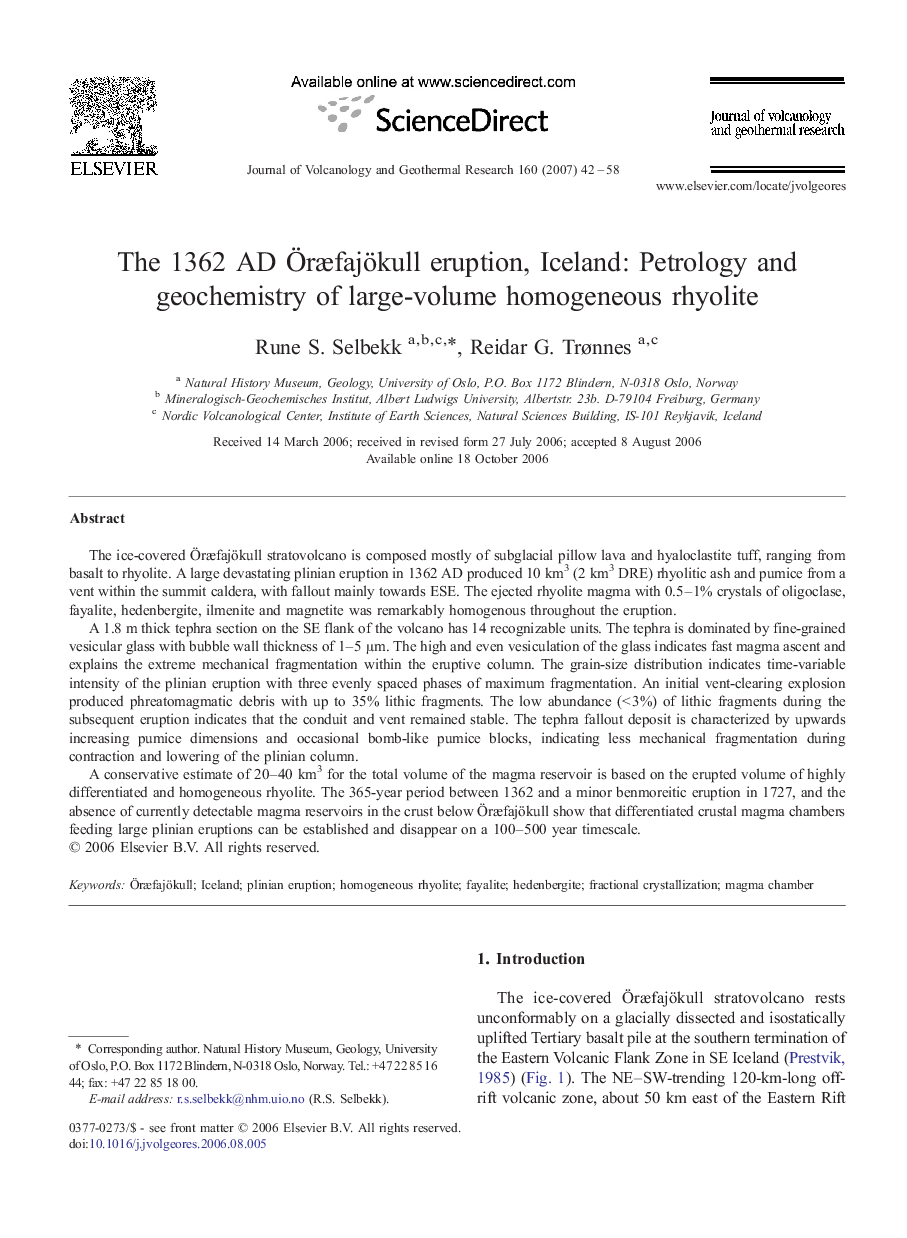| Article ID | Journal | Published Year | Pages | File Type |
|---|---|---|---|---|
| 4713978 | Journal of Volcanology and Geothermal Research | 2007 | 17 Pages |
The ice-covered Öræfajökull stratovolcano is composed mostly of subglacial pillow lava and hyaloclastite tuff, ranging from basalt to rhyolite. A large devastating plinian eruption in 1362 AD produced 10 km3 (2 km3 DRE) rhyolitic ash and pumice from a vent within the summit caldera, with fallout mainly towards ESE. The ejected rhyolite magma with 0.5–1% crystals of oligoclase, fayalite, hedenbergite, ilmenite and magnetite was remarkably homogenous throughout the eruption.A 1.8 m thick tephra section on the SE flank of the volcano has 14 recognizable units. The tephra is dominated by fine-grained vesicular glass with bubble wall thickness of 1–5 μm. The high and even vesiculation of the glass indicates fast magma ascent and explains the extreme mechanical fragmentation within the eruptive column. The grain-size distribution indicates time-variable intensity of the plinian eruption with three evenly spaced phases of maximum fragmentation. An initial vent-clearing explosion produced phreatomagmatic debris with up to 35% lithic fragments. The low abundance (< 3%) of lithic fragments during the subsequent eruption indicates that the conduit and vent remained stable. The tephra fallout deposit is characterized by upwards increasing pumice dimensions and occasional bomb-like pumice blocks, indicating less mechanical fragmentation during contraction and lowering of the plinian column.A conservative estimate of 20–40 km3 for the total volume of the magma reservoir is based on the erupted volume of highly differentiated and homogeneous rhyolite. The 365-year period between 1362 and a minor benmoreitic eruption in 1727, and the absence of currently detectable magma reservoirs in the crust below Öræfajökull show that differentiated crustal magma chambers feeding large plinian eruptions can be established and disappear on a 100–500 year timescale.
